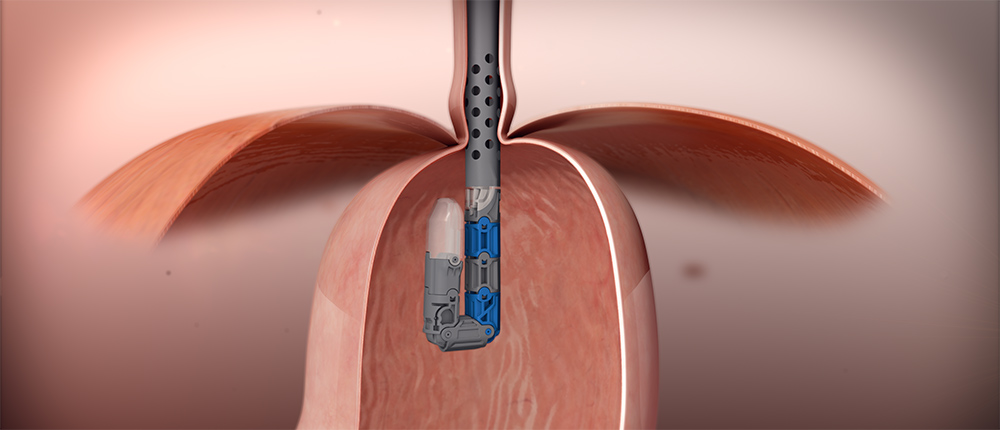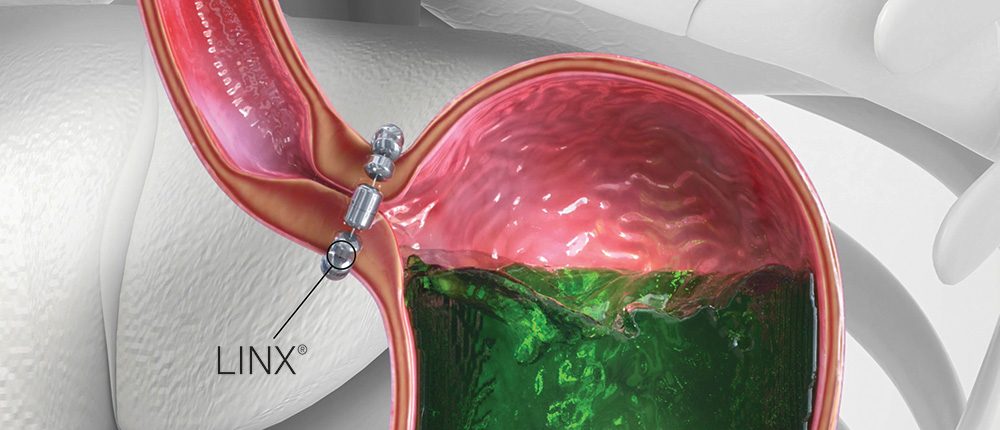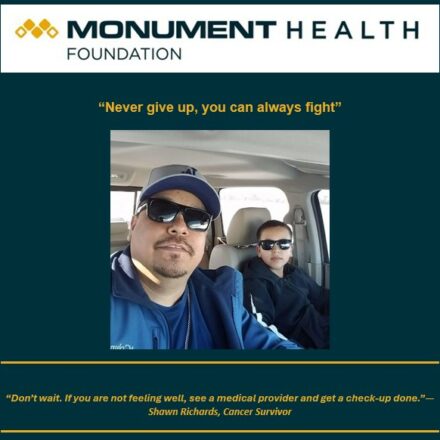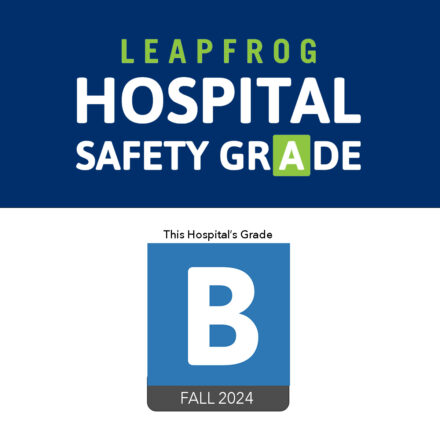
After lifestyle changes or medical treatments, some people still suffer from reflux symptoms. In those cases, surgery can help.
Transoral Incisionless Fundoplication (TIF)
Using a special device that is inserted through the mouth while you are sedated, the esophagus is pulled further into the abdominal cavity and the stomach is gently plicated (folded) onto the esophagus. This recreates the Lower Esophageal Sphincter to prevent reflux.
- No incisions mean quicker recovery and a lower risk profile
- Allows normal belching and vomiting
- 75 percent of patients are off PPIs after the procedure
- 90 percent of regurgitation symptoms are resolved
- Provides consistent and reliable outcomes
- Reversible if necessary
Magnetic Augmentation
A small device is placed around the esophagus. This device uses magnetic attraction to support the LES and prevent reflux without changing your body’s natural anatomy.
- Allows easy passage of food
- Allows normal belching and vomiting
- 90 percent of patients are still off their antacid medications five years after surgery
- Should not be used in patients with metal allergies
Magnetic sphincter augmentation with the LINX system involves placing a series of interlinked titanium beads, each with a magnetic core, around the lower esophageal sphincter. This strengthens the reflux barrier while preserving normal anatomy. If a hiatal hernia is present, it is repaired at the time of the procedure to restore and then preserve normal anatomy.
The LINX device is placed with laparoscopic surgery through five small quarter-inch incisions. While it is a surgical procedure, most patients are able to go home the same day of the procedure. After surgery, you will be asked not to do any heavy lifting or strenuous activity for about 2 weeks.
With magnetic sphincter augmentation, around 90 percent of patients can stop taking their antacid medications immediately after surgery, and long-term (5-year) follow up shows no need for return to antacid medication use.
Fundoplication (Nissen Fundoplication Surgery)
Part of the stomach is loosely wrapped around the esophagus. This augments the LES valve to prevent reflux.
- Some patients have difficulty belching and vomiting through the wrap
- No implantation of foreign body
- Best results seen in patients with Body Mass Index (BMI) less than 35
Nissen fundoplication has been performed laparoscopically for over 20 years with excellent results. After mobilizing the top part of the stomach, it is wrapped around the base of the esophagus to augment and bolster the lower esophageal sphincter. If a hiatal hernia is present it is repaired during the procedure. After the procedure it is recommend that you stay on a liquid diet, with no heavy lifting or strenuous activity for at least 2 weeks.
Similar to magnetic sphincter augmentation, Nissen fundoplication is a surgical procedure performed laparoscopically with five small incisions and most patients are allowed to go home the same day.

Gastric Exclusion
Divides the portion of the stomach that produces acid and diverts it away from the esophagus.
- Best in patients with a Body Mass Index (BMI) greater than 35
- Will result in loss of excess weight
- Can result in vitamin and mineral deficiencies
- Gastric exclusion with diversion is a very similar procedure to a Roux-en-Y gastric bypass that is performed for weight loss.
Because acid is produced in the distal (outer) part of the stomach, after transecting (cutting across) the stomach and re-routing the intestine, there is no way for acid to get from the distal stomach where it is made, back up into the esophagus. This procedure offers excellent resolution of reflux symptoms and has the side effect of helping patients lose weight.
Because magnetic sphincter augmentation has not been studied in patients with a BMI above 35 and Nissen fundoplication tends to be less effective in overweight patients, gastric exclusion is an excellent option for people with a BMI above 35.
This procedure is performed laparoscopically through six small incisions. Usually patients are kept in hospital for two days after the procedure.
Because this procedure will force you to change your eating habits and lose weight, your physician will ask that you meet with a dietitian before the procedure to ensure that you are comfortable and able to make the necessary dietary changes.





